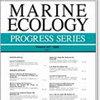Anthropogenic and environmental drivers of Acanthurus achilles presence in Hawai‘i
IF 2.2
3区 环境科学与生态学
Q2 ECOLOGY
引用次数: 0
Abstract
ABSTRACT: Despite the ecological and social importance of reef fishes, data on their populations, habitat use, and other drivers are often scarce, which creates challenges for effective management. These challenges are particularly acute for rare or at-risk species such as Acanthurus achilles, a reef fish with a documented population decline in recent years in Hawai‘i, USA. We used a data set of in situ fish surveys from across the main Hawaiian Islands combined from multiple survey programs to quantify A. achilles presence and absence and applied generalized linear mixed-effects models to examine the relationships between presence of (1) all individuals, (2) juveniles, and (3) adults with 27 spatially continuous environmental and anthropogenic drivers to understand the main drivers of presence. Using the modeled relationships between presence and all drivers, we predicted the probability of A. achilles presence at a 100 m scale within the 30 m depth contour of the main Hawaiian Islands. Environmental drivers, especially habitat drivers such as depth and rugosity, emerged as significant drivers of A. achilles presence, while anthropogenic drivers like land-based pollution and fishing had fewer significant relationships with A. achilles presence. The predicted probability of presence varied both between islands as well as within islands, with the highest probability of presence around Kaho‘olawe and Hawai‘i and the lowest around O‘ahu. Our modeling approach and high-resolution spatial predictions provide empirical evidence of the importance of environmental drivers in explaining A. achilles presence and identify preferred habitat at relevant scales for fisheries management.人类活动和环境因素导致夏威夷出现了阿坎库斯-阿基里斯(Acanthurus achilles)。
摘要:尽管珊瑚礁鱼类在生态和社会方面具有重要意义,但有关其种群、栖息地利用和其他驱动因素的数据往往很少,这给有效管理带来了挑战。对于稀有或濒危物种来说,这些挑战尤为严峻,例如美国夏威夷近几年有记录的种群数量下降的珊瑚礁鱼类--Acanthurus achilles。我们利用来自夏威夷主要岛屿的原地鱼类调查数据集,结合多个调查项目,对阿卡琉斯的存在和缺失进行了量化,并应用广义线性混合效应模型研究了(1)所有个体、(2)幼体和(3)成体的存在与 27 个空间连续环境和人为驱动因素之间的关系,以了解存在的主要驱动因素。通过模拟存在与所有驱动因素之间的关系,我们预测了在夏威夷群岛主岛 30 米等深线范围内 100 米尺度上出现阿基里斯鱼的概率。环境驱动因素,尤其是深度和崎岖度等栖息地驱动因素,成为阿基里斯鱼出现的重要驱动因素,而陆基污染和捕鱼等人为驱动因素与阿基里斯鱼出现的显著关系较小。岛屿之间以及岛屿内部的预测出现概率各不相同,卡霍奥拉维岛和夏威夷岛出现概率最高,奥胡岛最低。我们的建模方法和高分辨率空间预测为解释阿基里斯鱼存在的环境驱动因素的重要性提供了经验证据,并为渔业管理确定了相关尺度的首选栖息地。
本文章由计算机程序翻译,如有差异,请以英文原文为准。
求助全文
约1分钟内获得全文
求助全文
来源期刊

Marine Ecology Progress Series
环境科学-海洋学
CiteScore
5.30
自引率
8.00%
发文量
238
审稿时长
3 months
期刊介绍:
The leading journal in its field, MEPS covers all aspects of marine ecology, fundamental and applied. Topics covered include microbiology, botany, zoology, ecosystem research, biological oceanography, ecological aspects of fisheries and aquaculture, pollution, environmental protection, conservation, and resource management.
 求助内容:
求助内容: 应助结果提醒方式:
应助结果提醒方式:


